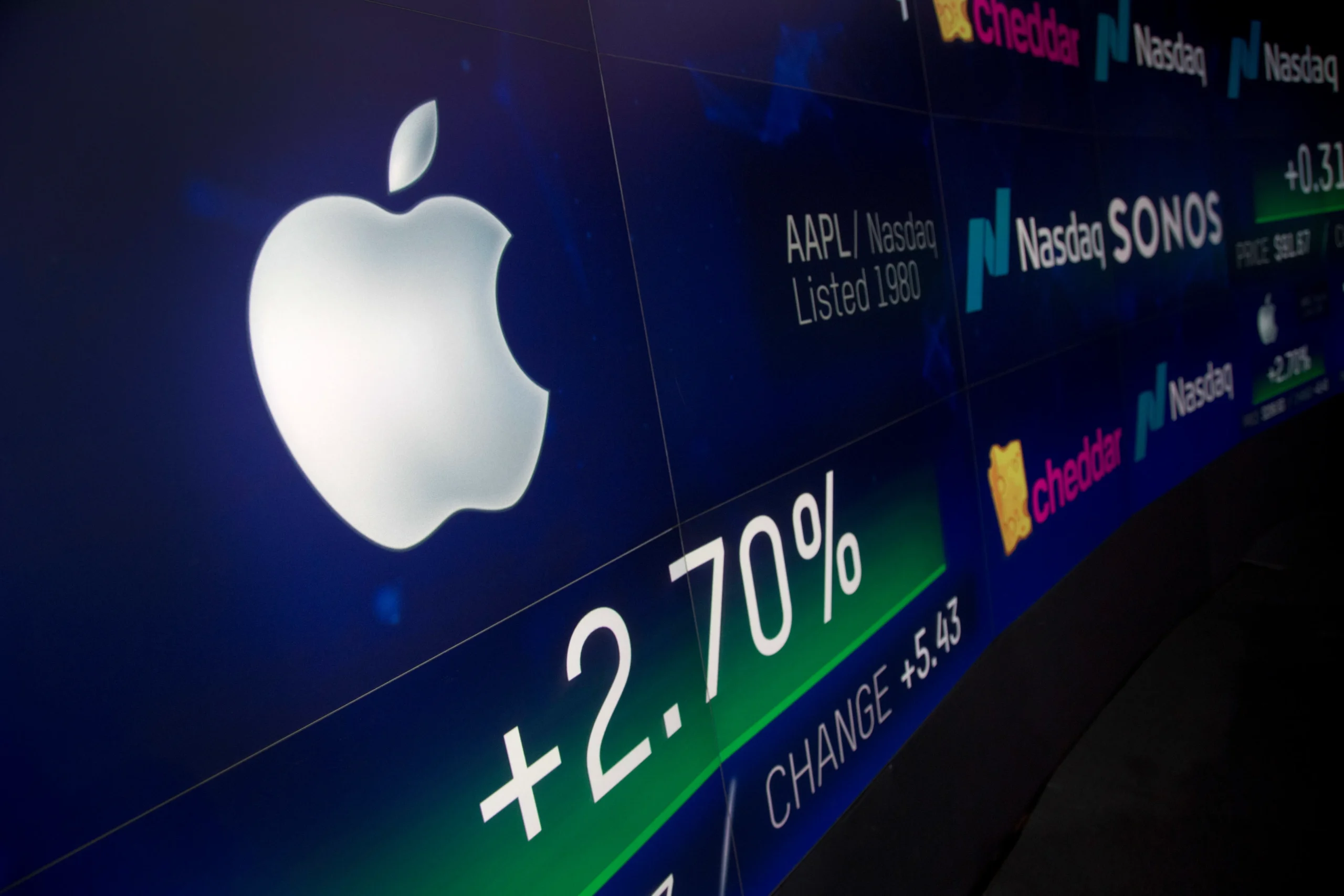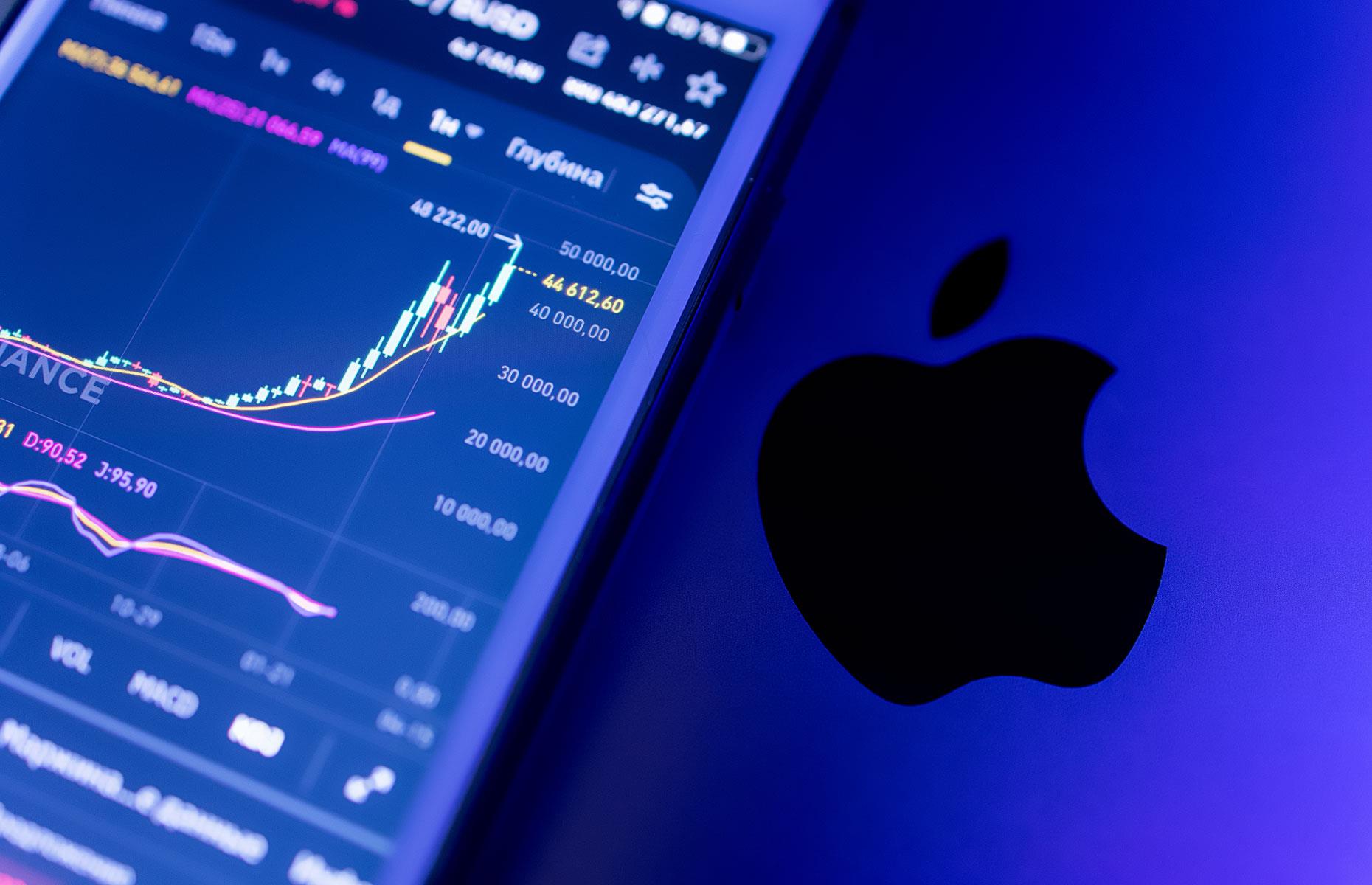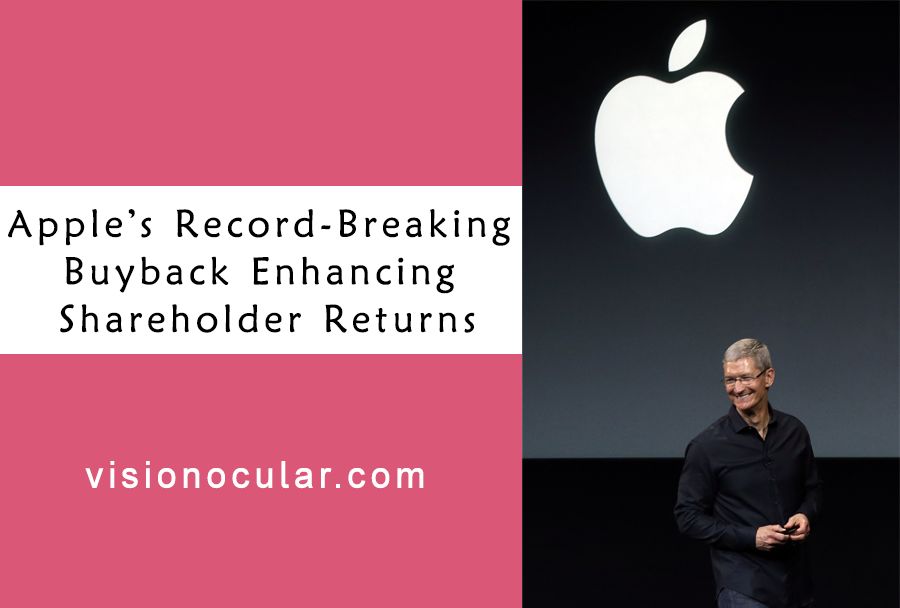Hey everyone! Today, let’s dive into a topic that’s been making waves in the financial world: Apple’s record stock buyback and how it benefits investors. If you’ve been following Apple Inc., you might have heard about their massive stock buyback programs. But what does that really mean for you, the investor? Let’s break it down in a way that’s easy to understand and see why this is such a big deal.

What Is a Stock Buyback?
Before we get into the nitty-gritty, let’s clarify what a Apple stock buyback is. Simply put, a stock buyback (or share repurchase) happens when a company buys back its own shares from the market. This reduces the number of outstanding shares, which can increase the value of the remaining shares. Think of it like a company buying back pieces of itself, which often leads to a more valuable share for those who hold onto them.
Apple’s Record Stock Buyback: The Numbers
Apple has recently set a new record with its Apple stock buyback program. In 2024, the company announced a staggering $100 billion stock buyback. This massive repurchase program is the largest in Apple’s history and one of the biggest in corporate history. So, why is Apple going big with this buyback? Let’s break it down.
Why Is Apple Buying Back So Many Shares?
- Boosting Shareholder Value: One of the main reasons Apple stock buyback is buying back its shares is to boost shareholder value. By reducing the number of outstanding shares, Apple can increase earnings per share (EPS). When EPS goes up, the stock price often follows, which benefits shareholders.
- Confidence in the Company’s Future: A significant buyback also signals confidence in the company’s future. It suggests that Apple’s leadership believes the company’s stock is undervalued and that investing in itself is a better option than other uses of capital.
- Return of Capital to Shareholders: Buybacks are a way for companies to return capital to shareholders. This is especially appealing in low-interest-rate environments where other investment opportunities might not offer great returns. For Apple, returning capital via buybacks is a way to reward investors.
- Tax Efficiency: Stock buybacks can be a more tax-efficient way of returning money to shareholders compared to dividends. Dividends are taxed as income, while buybacks can potentially lead to capital gains, which might have more favorable tax treatment depending on the investor’s situation.
How Does This Benefit Investors?

- Increased Share Value: As mentioned earlier, when a company buys back its shares, the reduction in the number of shares outstanding typically increases the value of each remaining share. For investors holding Apple stock, this means that the value of their investment is likely to go up.
- Improved Earnings Per Share: With fewer shares in circulation, Apple’s earnings per share (EPS) tend to increase. This is an important metric for investors because it reflects the company’s profitability on a per-share basis. Higher EPS can lead to higher stock prices, benefiting investors.
- Enhanced Investor Confidence: When a company like Apple engages in a large buyback, it can boost investor confidence. It shows that the company is confident about its financial health and future prospects, which can attract more investors and potentially drive up the stock price.
- Flexibility and Control: Unlike dividends, which are fixed and must be paid out regularly, buybacks offer more flexibility. Companies can adjust the amount and timing of buybacks based on their financial situation and market conditions, providing more control over how they return value to shareholders.
The Bigger Picture: Apple’s Financial Health
Apple’s record stock buyback is a reflection of its strong financial health. The company has been generating substantial revenue and profits, allowing it to undertake such a large buyback program. This financial strength not only benefits shareholders through increased stock value but also provides a buffer against market fluctuations.
Potential Risks and Considerations
While stock buybacks can offer several benefits, they are not without risks and considerations:
- Short-Term Focus: Sometimes, companies may use buybacks to artificially boost stock prices in the short term. While this can benefit investors in the short run, it might not always reflect the long-term health of the company.
- Opportunity Cost: The funds used for stock buybacks are funds not used for other potential investments, such as research and development, acquisitions, or expanding operations. Investors should consider whether the buyback is the best use of capital.
- Market Perception: Large buybacks can sometimes be perceived as a lack of better investment opportunities. While this is not necessarily the case for Apple, it’s something to keep in mind when evaluating other companies’ buyback programs.
Looking Ahead: What to Expect from Apple
As Apple continues to execute its stock buyback program, it’s important to stay informed about the company’s performance and market conditions. Keep an eye on quarterly earnings reports, financial statements, and news related to Apple’s business strategy.
How to Benefit from Apple stock buyback
- Stay Invested: If you’re already an Apple stock buyback shareholder, holding onto your shares could be a good strategy. The stock buyback is likely to increase the value of your investment.
- Monitor Market Trends: Keep track of Apple’s performance and broader market trends. Understanding how the stock buyback fits into Apple’s overall strategy can help you make informed investment decisions.
- Consult with Financial Advisors: If you’re unsure about how Apple’s buyback program impacts your portfolio, consider consulting with a financial advisor. They can provide personalized advice based on your financial goals and situation.
Conclusion
Apple’s record stock buyback is a significant event that highlights the company’s financial strength and commitment to enhancing shareholder value. For investors, this buyback program presents an opportunity to benefit from increased share value and improved earnings per share. However, it’s also important to consider the broader implications and potential risks associated with buybacks.
So, whether you’re a long-time Apple investor or just considering adding Apple stock buyback to your portfolio, understanding the impact of this buyback program is crucial. Stay informed, stay invested, and keep an eye on how Apple continues to shape its financial future.
Feel free to share this post with fellow investors or anyone interested in learning more about how Apple’s stock buyback can benefit them. If you have any questions or want to discuss this further, drop a comment below!
Read more – Click here





Leave a Reply